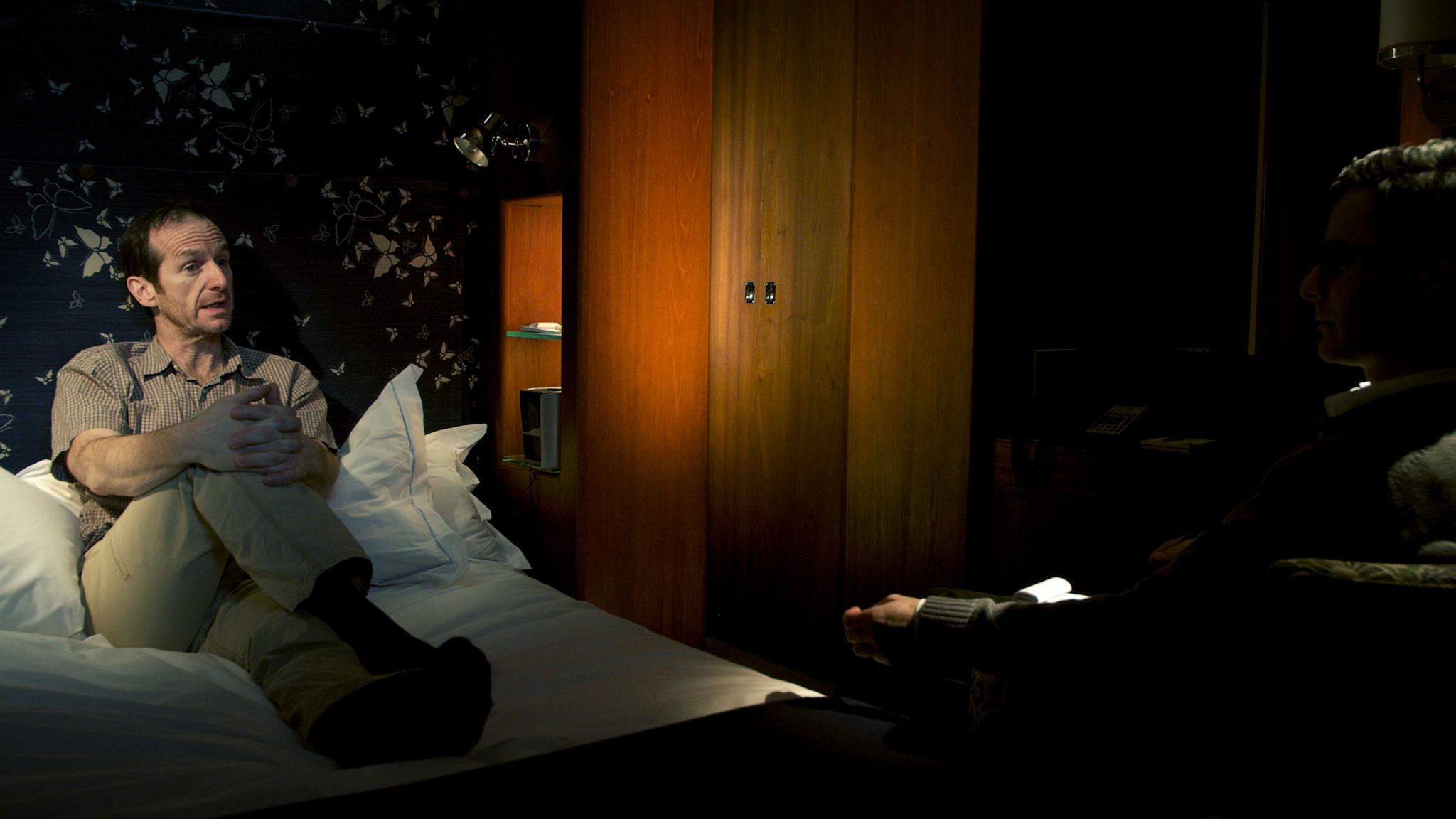Suddenly there is a camel on a German country road. Followed by a woman in her mid-forties, it runs into a forest and leads the woman to a desertlike hollow, in which dead German soldiers lie. They were likely killed in a massacre during their Afghanistan deployment; in any case the image alludes to the photographic work Dead Troops Talk (1992) by Jeff Wall. Then the woman drives on with her husband to a Northern German train station to pick up her son, a soldier returning from Afghanistan. Such surrealistic flashes are repeatedly inserted into Omer Fast’s film Continuity (2012), first shown at the last Documenta. Furthermore, the artist tells the story of the family’s reunion three times, each time with a different actor for the son and always in a slightly varied manner. One time the young soldier’s luggage suddenly disappears, another time he sees worms in his dinner, then an eye swims in his red wine glass, lastly his mother gets into bed with him. Might the young man even be a call boy, as the Documenta Guidebook suggests? The events remain in a diffuse suspension; the story, which reveals itself as fiction, oscillates vexingly between staged psychoses and superficial sentimentality.
Fast’s film 5000 Feet Is the Best (2011) also tells a story of war; more precisely of the experiences that US Predator drone pilots had before, during and after their deadly work in Afghanistan. To this end, in autumn 2010 Fast held longer discussions in Las Vegas with two pilots who controlled unmanned drones from there. These conversations were then the basis for a staged interview that is the centre of his film. A pilot sitting on a hotel bed responds to questions. The conversation takes place in a distinctly paranoid atmosphere. The pilot continually dodges questions, yet he also speaks about technical details of his work and about psychological problems that torment him after the war. Simulated drone flights over Las Vegas as well as over a huge suburban area are cut between the hotel scenes, as is the story of a man who is obsessed with travelling by train and then actually spends one day as a train driver, albeit without having permission. The seemingly off- topic narrative clearly shows the pilot’s difficulty in speaking too directly and for too long about steering the drone. The pilot has exact knowledge of the consequences of his only seemingly ‘virtual’ mission: the remotely operated view and flight, made possible by technology, has deadly consequences for the people in Afghanistan.
What is exciting about this exhibition is that both films are presented together for the first time and that therefore a comparative dialogue between them is possible. Remarkably, Continuity has a hard time holding its own against 5,000 Feet Is the Best. The latter film convinces the viewer through both its formal and material complexity and its analytical poignancy, which emerges from the interplay between fact and fiction. By contrast, Continuity threatens to get stuck in an almost absurd poetry. Although the film is quite oppressive in parts, it hardly generates any insight.
Translated from the German by Emily Luski.
This article was first published in the April 2013 issue.
